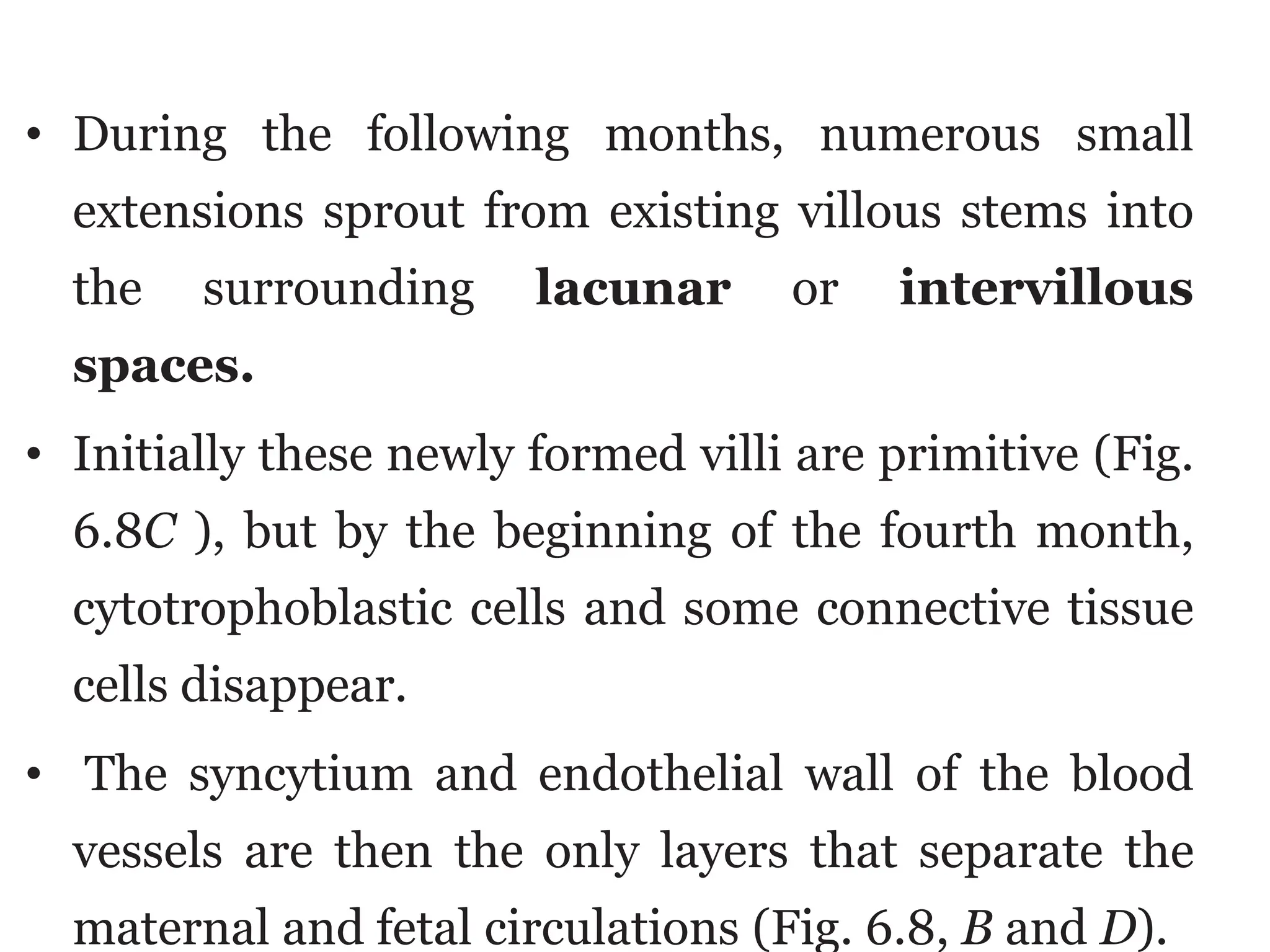The document provides a detailed overview of the placenta, describing its structure, development, and functions including nutrient and gas exchange between the mother and fetus. Key components include the chorionic villi and decidua basalis, which play crucial roles in placental function, as well as various abnormalities that can occur. It also addresses the placenta's endocrine role in hormone production during pregnancy.































